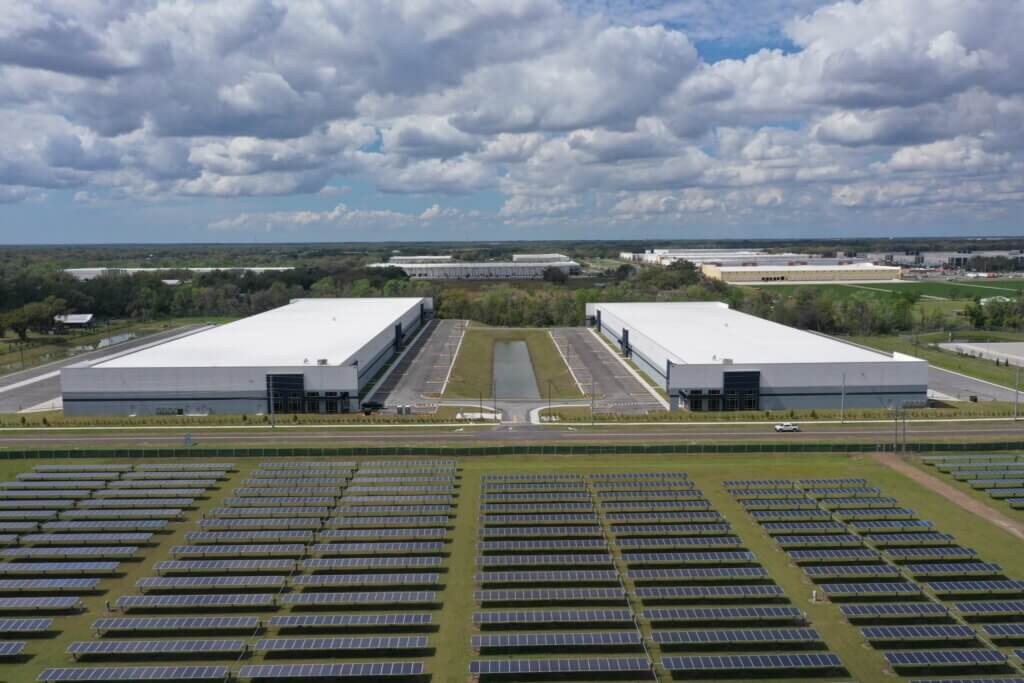Technology and Regulation Fuel Back-Office Functions
Automation and technology have changed some back-office jobs at two Polk County community banks, and industry regulations are changing things further, impacting their back-office operations.
Though back-office operations are largely left unnoticed by customers these functions play a key role in keeping your money safe. And they’re a good fit in Polk County’s economy.
“There has been a rapid increase of online banking and mobile payments in the banking industry and online insurance transactions,” said Dr. Lyle Bowlin, dean of the Jannetides College of Business & Entrepreneurial Leadership at Southeastern University. “Both banking and insurance companies are moving more and more to customer-focused operations. This means the need to automate and centralize these operations is becoming a high priority. However, back-office processes still heavily involve people and paper. Polk County has a potential workforce that is a good fit for these new, more automated back-office operations.”
Greg Littleton, president and CEO of Citizens Bank and Trust, said more than a third of his workforce — 60 of 160 people — is classified as “back office.” Those support positions include human resources, training, accounting, proof (all checks pass through the proof department, which is highly automated now but still requires five people at Citizens), IT, compliance, BSA (Bank Secrecy Act) and bookkeeping (deposit operations). There’s also a back room for the trust and mortgage departments, he said.
Two subsidiaries — a title agency and discount brokerage — add five more back-room positions. Citizens Bank has 14 locations in Polk County, including one about to open at Brannen Road and South Florida Avenue in Lakeland.
Bank of Central Florida, Florida small business, has a small back-office department dedicated to certain functions, but several more employees perform back-office functions in individual departments, said Chairman, CEO and President Paul Noris.
Noris said some changes help internal customers as well as clients, such as fraud detection and digital channels. “TouchID for biometric authentication, out-of-band fraud detection and PositivePay are some examples. Other back-end services are related to working efficiencies behind the scenes for our internal needs. This would include budget, client contact management systems and client relationship summaries.”
He says the number of employees working at his bank — 60 — stays relatively stable. “Our company is growing so we use these back-office efficiencies to maintain staffing levels while the bank grows. Due to our growth, we have not used these opportunities to reduce staff.” Bank of Central Florida is located in Lakeland and has lending offices in Winter Haven and Plant City.
Littleton and Noris explained how their businesses are growing and changing, and what they think the future holds. Here are four things you should know.
Technology
Technology has led to efficiencies, which, in Noris’ case, helps the bank maintain its head count to keep up with growth.
“Software enhancements have truly driven automation all across the industry,” he said. “These improvements have allowed banks to grow without increasing staff or to consolidate positions in the back of house to reduce costs.”
But there’s more to it than that. Ten years ago banks were not offering electronic banking, so that back-office function didn’t exist. Now?
“It takes backroom help when you have 1,000 items being deposited each month with a cell phone,” Littleton said. Wire transfers for businesses has also forced changes. “All that technology has changed the look and makeup and job descriptions of the back room.”
Regulation
Regulation has also forced changes. Ten years ago, Citizens had one person working part time on “secrecy” issues. Now, Littleton has numerous full-time employees working on the Bank Secrecy Act and compliance. “It’s all regulatory driven. When they add task upon task, you have no other choice but to hire people to get it done. These are non-revenue-producing jobs and they are not cheap.”
Littleton said many of the changes are a direct outcome from the mortgage/housing crisis and the economic downturn that ensued in 2008 and later. He said Citizens always had a conservative approach to underwriting, but regulations changed the way they do business and even how they have to deal with people who have been customers for years.
“Now we have a checklist as long as my arm: These are things you’re going to have to get me to make a credit decision,” he said. A lot of people wonder why the bank needs all that information, but it’s regulation, Littleton said.
Relationships
Banking is about relationships, Littleton and Noris said, and that hasn’t changed — even in the digital world.
“There are good reasons for people to bank with a big bank. Sometimes there are not — it just happens to be where they have been for a long time,” like when a nationwide bank buys a small community bank, Littleton said. Because large banks have centralized functions, usually out of state, it can be hard for local residents to get help resolving problems or getting help.
When the recession hit, “a lot of our customers could have lost their businesses or homes, but because they had a relationship with someone here, we knew them, believed in them, and we were able to ride it out with them,” he said.
Noris said he thinks relationships remain important, especially in a market like Polk County. “We are able to get to know our clients on both a business and personal level. We try to understand where our clients are taking their business and be proactive in our approach to meeting their needs. We value relationships, and we look for clients that do as well.”
The future
Littleton said two things that drive banks now will continue to do so in the near future: technology and regulation.
“I would love to see more technology and less regulation,” he said. “A whole industry — financial technology (FinTech) has spawned out of technology for our industry. We are installing it now for online mortgage and consumer loan applications. We are a small bank, but we have to have to have it. Technology has made it so a community bank can offer that same kind of service. The longer it’s out the more affordable it’s become.”
Noris said he thinks the biggest changes coming are “in the ability to manipulate data and truly get to information that can help us manage our business.”
That differs from the past, when bankers made decisions based on summary information, he said. “Now we can see things in real time and make adjustments accordingly.”
He also envisions “an evolution toward real-time payments for both consumers and businesses, (which) will become the new normal. “Banking will continue to find new ways to service clients as mobile service strategies will replace the face-to-face interaction our industry was built on.”
Bowlin sees future growth in back-office functions. “The upgrading of back-office operations is still in the early stages of growth and should definitely grow at a rate faster than the overall economy. Locations that develop these new automated processes will have a competitive advantage that should attract other firms and continued growth.”



